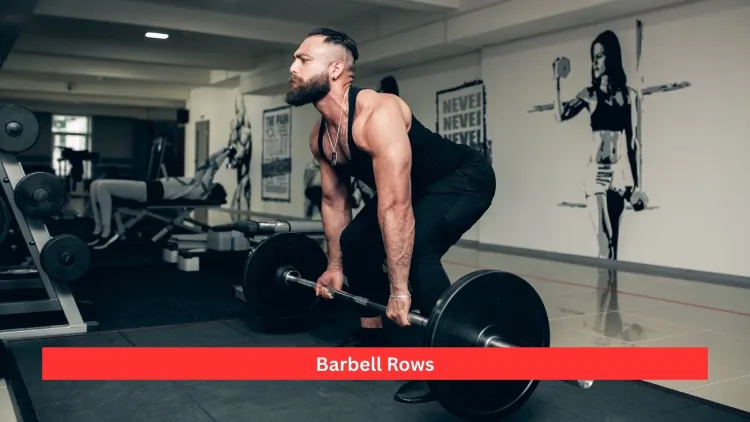Barbell rows are a fantastic compound exercise to build back thickness, improve posture and strength in other senior bodybuilding movements like the bench press and deadlift. They hit the lats, rhomboids, traps, rear delts, biceps, and core, as well as enhancing grip and stability. Inexperienced lifters should ease into light, practising technique, and intermediate or advanced lifters may add heavier loads and variations of the row, including Pendlay or Yates rows. Barbell rows enhance both muscle growth and strength and provide a benefit to sports performance, and are usable by almost every body type when performed properly.
You can view our previous article if you are concerned about hip mobility stretches.
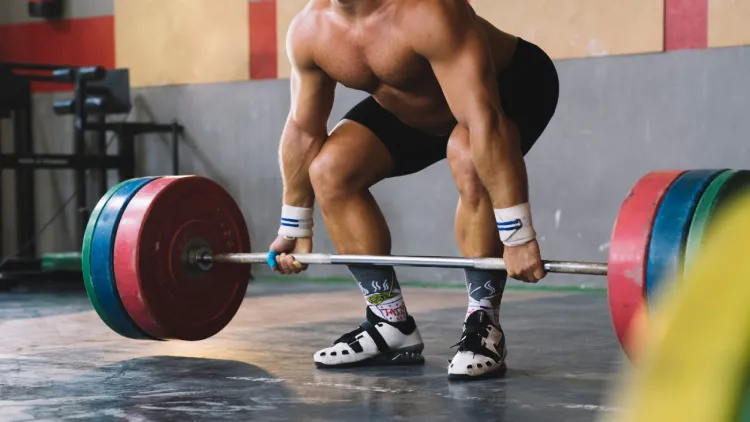
What Are Barbell Rows?
Barbell rows include a hinged hip and pulling a barbell towards your torso, which is considered a strength training exercise. It can also be referred to as the bent-over barbell row or bent-over row; it is an exercise that has long been part of bodybuilding, powerlifting, and strength training programs in general. Barbell rows are also compound exercises, whereas the isolation lifts target a single muscle; they encompass a larger volume of muscles and are thus highly efficient when it comes to growth and gaining strength.
The barbell rows are equated with dead lifts and pull-ups because of their versatility. Deadlifts hone raw pulling power off the floor, and pull-ups develop vertical pulling. Barbell rows fall in between these two exercises, as they develop both horizontal pulling strength and muscular endurance, as well as developing thickness in the back, which complements the width gained by vertical pulling exercises.

Benefits of Barbell Rows
Back Thickness and Growth
Among the most commonly cited reasons that lifters value barbell rows is to develop a thick, muscular back. Broad lats can provide that V-taper, but rhomboids, traps and erector spinae thickness give a physique the depth it needs to be complete.
Bench Press- Deadlift Carryover
Barbell rows strengthen the upper body scapular retraction and stability that are paramount in pressing power. Most lifters discover that their bench press improves along with their rows as the two improve with strength. Correspondingly, heavy deadlifts are stabilised by posterior chain activations as one does the performance in rows.
Maximum Grip Strength and Core Strength
Holding the bent-over position will train your abs, obliques, and spinal erectors. Meanwhile, gripping to perform in a condition of heavy loading strengthens the grip that enhances the ability of all the pullers.
Posture Improvement
Forward-rounded shoulders and slack upper backs are widespread in the world of sitting and computer use. Barbell rows also work the muscles that hold the shoulders in the back position as opposed to the hunched-back position often caused by bad posture.
Muscle Growth
Barbell rows can use heavier weights and hence cause progressive overload, which is necessary to induce hypertrophy. Playing 8-12 reps 3-5 sets at a time is usually sufficient to increase muscle.
Muscles Worked
Barbell rows are a compound exercise which targets almost the entire upper body as a whole and the core. The primary muscles used include
- Primary: latissimus dorsi (lats), rhomboids, trapezius
- Secondary: Biceps, biceps, biceps and erector spinae, abdominals
Such broad involvement can also be seen as why barbell rows can add size to not only the back but also arm mass, grip strength, as well as general pulling power.
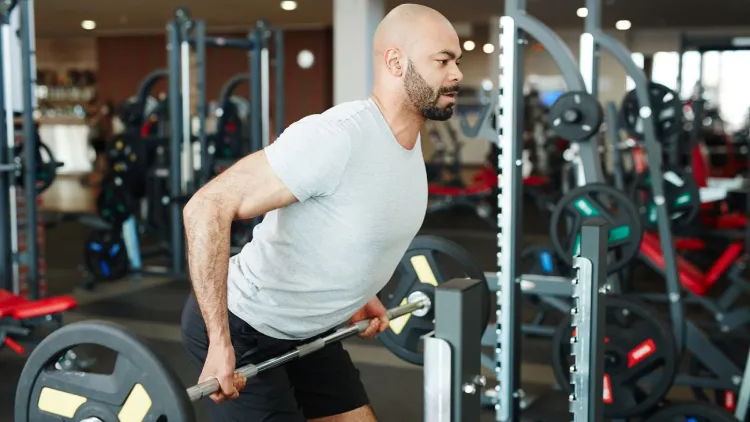
How to Do Barbell Rows Correctly
Setup
- Place your feet together with the width of your hips.
- Hold the bar at shoulder width or more, either pronated or supinated.
Starting Position
- Bend your knees a little and bend forward at the hips so your torso is at an angle of about 45 degrees to the floor.
- Push your back straight, chest up, and core braced.
Execution
- Pull the barbell to your lower chest or upper stomach
- Either curve the sides of the elbows or keep them in and tight to the body.
- Tighten at the top by squeezing your shoulder blades.
- Slowly lower the bar till the arms are straight
Breathing
- On bottom inhale.
- Exhale in a pull-up row
Tip: Walk with caution. Travelling too hurriedly is at the expense of one form, and travelling too slowly compromises efficiency. The perfect tempo is rather quiet and strong.
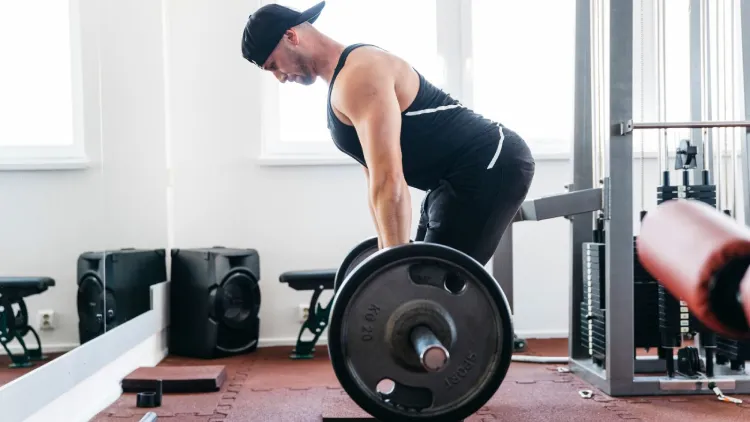
Common Mistakes to Avoid
- Rounding the Lower Back- This may result in injury when this should not be the case; a neutral back must be maintained.
- A lot of Weight Loading – Heavy numbers sacrifice form and increase risk and muscle activity.
- Standing Too Upright –Makes the lift more of a shrug, inhibiting back development.
- Elbows Being Too Wide –Dilutes the engagement and stretches the shoulders.
- Jerking the Weight –Employing weight on the leverage because of energy rather than command of muscle.
Barbell Row Variations
- Pendlay Row- The barbell is on the floor in between each rep, making this exercise focus on proper form and explosive power.
- Supinated Row- A Large amount of stress is given to the lower lats and biceps.
- Yates Row – Prowler is in a more erect position, hitting traps and upper back.
- Single Arm Landmine Row – One end of the barbell is tied to the ground, forming a one-sided row.
All the variations target a little bit different muscles, but they all help to have a thicker, stronger back.
Tips for Better Results
- In principle, one should train with a lightweight (about 2030 kg) at the beginning of the learning process to teach the form.
- A healthy man of average build will probably row 60 to 80 kg on working sets, although more experienced lifters will use a heavier weight. A bent-over row of 80 kg is strong enough to be called solid as far as the intermediate level goes.
- Progressive overload: This means that weight or reps need to be increased with time.
- Remain at 3 5 x 6 12 reps to gain hypertrophy, or use 5×5 as a more balanced approach to strength and muscle mass development.
- A pronated grip (overhand) develops more thickness in the upper back, whereas a supinated grip (underhand) thickens lats and the biceps.
- You need rest da;s, you don’t need to row them all 7 days a week. Sessions should be twice a week in order to grow.
- Barbell rows may be more comfortable for people with longer arms and strong hips, but almost anyone can benefit.
- Slow, controlled movement is important to beginners. Slowly increasing speed is most optimal when building strength.
- When used properly, heavy rows are safe and will not inhibit growth. In their place, there is increased bone density and muscle strength.
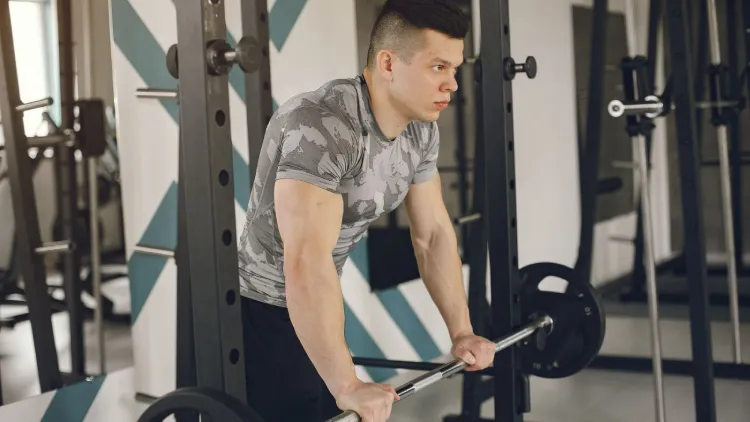
Final Thoughts
Barbell rows are also one of the best exercises to build a powerful, muscular back. Not only do they increase muscle thickness, but they also make the bench press and deadlift stronger, among other compound exercises. An adequate working weight works wonders, whether it is 4080 kg, depending on experience, but the critical factor is form and consistency.
Programming the barbell row correctly- whether that is 3-5 sets of hypertrophy ranges, or strength-oriented programs like 5×5, optimal barbell rows can achieve a well-rounded physique, stronger lifts, and improved posture. When done with light weight and excellent technique, they become safe exercises for beginning users; they can still be powerful exercises when used by advanced athletes with heavy loading.
Barbell rows can be a part of any training regimen aimed at aesthetics and raw strength as well as athleticism.
Frequently Asked Questions
1. Do barbell rows increase muscle and strength?
Yes. Barbell rows are compound exercises that build the lats, traps, rhomboids, biceps, as well as the core. Since they can be used to facilitate progressive overloading with heavy weights, they are great at building muscle (hypertrophy) and overall body strength.
2. How heavy a barbell should I use to row?
New starters should be as light as around 20-30 kg to develop proper form. An ordinary healthy man can normally train with weights of 6080 kg, whereas experienced lifters tend to work heavier. The special form and progressive development, and not the ability to lift the most weight.
3. What is the best grip for the barbell row?
An overhand (pronated) bar grip will lend itself toward thickness in the upper back, whereas an underhand (supinated) grip will work the back as well as the biceps. Both work well; therefore, many lifters will alternate between grips in pursuit of different results.
4. What should be the number of sets/ reps?
Muscle growth should use 3-5 sets of 8-12 reps. To gain overall strengthening and even size, 5×5 is also good. Putting novices on small amounts of weight, then cutting sets as they develop the technique, is better.

